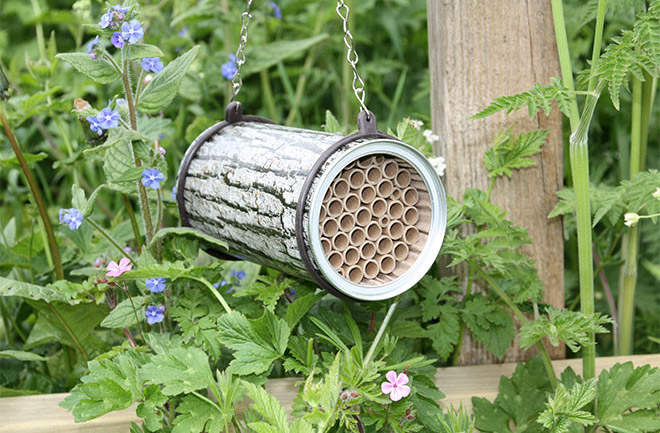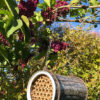Ynglekasse for solitære bier er laget slik at papptubene kan byttes for å øke levetiden på ynglekassen. Den har også en beskyttelse som kan settes på for å hindre predasjon.
You can help the conservation of our native bees by simply hanging this bee house in your garden. Then sit back and watch the fascinating life cycle of your new pollinating team.
The Pollinating Company Bee Nester is packed with so many clever features!
- Comes box fresh with peelable foil wrap
- Moveable woodpecker and predator guard built in
- Ready to hang
- Instructions on inside of wrap
- Designed so that card tubes can be replaced to extend nester life
- Bee tubes are insulated inside nester
- Nesting tubes perfect size for Mason, Orchard & Leafcutter Bees
Our precious pollinators need somewhere safe to lay their eggs. Your bee nester provides the perfect place for the female bees to construct her egg cells, which develop into bee larvae and finally emerge in Spring as the new generation of bees.
The nester should be hung in a sheltered spot in your garden. A good spot should have nectar plants and a water source nearby. Once your nester is filled use the perforated lid as a predator guard to protect the open ends of the card nesting tubes over winter.
Viktig informasjon om Ynglekasse for solitære bier
These products are for wild creatures and as such, you should not expect immediate habitation. We suggest you carefully read the supplied instructions for siting and provide this product in a suitable habitat for the target species. The product can then be re-visited 6 – 12 months later, or in the appropriate season, to see if it is being used.
If after 24 months the product has not been used, it may be worth choosing an alternative location to site it and/or look to see what improvements you can make to provide a suitable environment for your target species (flowers, woodpiles, rough areas of garden etc)
Because many species of creature are constantly seeking refuge and safe nesting sites, you may find that an unexpected species is using your product – this is part of nature and all species should be welcomed as part of your wildlife garden.


















